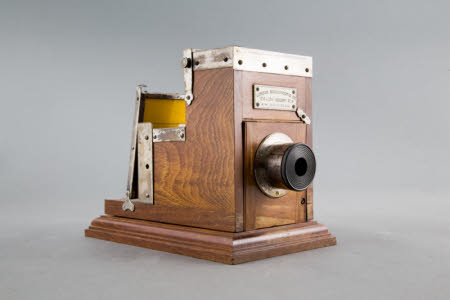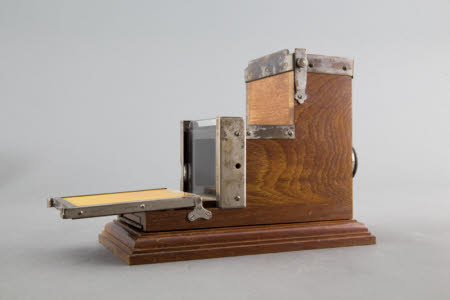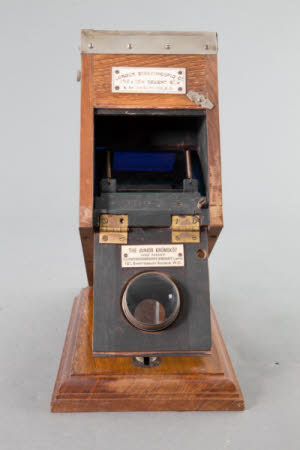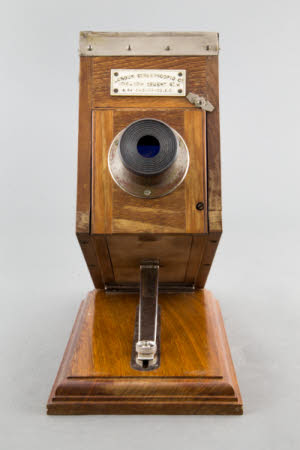Kromskop viewer
Category
Photographic technology
Date
1890 - 1895
Materials
Wood, Glass, Metal, Plastic
Measurements
178 x 131 x 243 mm
Order this imageCollection
Fox Talbot Museum, Wiltshire
NT 1524985.1
Summary
Kromskop viewer and three part slide Kromskop or Kromskope viewer invented by Frederick Eugene Ives .It enabled viewing of colour separation transparencies. The separations are laid on the stepped part of the viewer over hinged filters coloured red , blue and green. The viewer is then strongly lit from above and by the hinged reflector at the rear, the three images are superimposed and redirected to the viewing lens by internal reflectors, after manual adjustment to achieve correct register the photograph can be viewed in true colour. The viewer is a wooden box with a moulded base and three steps. The front has a hinged drop down plate which is the mount for the viewing lens. There is a plastic label embossed London Stereoscopic Co 106 and 108 Regent St W and 54 Cheapside, E.C. The side are mirror image of each other and comprise three steps down to the back with metal mounts holding the filters horizontally and providing for mounting the slides in a vertical plane. The rear hinge plate has a yellow reflecting surface which is used to register the three images but the retaining slides are missing. At the extreme back of the box structure is a large hinge which allows the entire viewer to be raised from the baseboard and there is a gallery and screw structure beneath to hold the viewer at an angle.
Provenance
Part of the Fenton Collection. A gift from British Film Institute in 2017. From 1986-1999, part of BFI collection for the Museum of the Moving Image. BFI purchased collection in 1986 from James Fenton's Museum of Photography, Port Erin, Isle of Man 1976-1986



